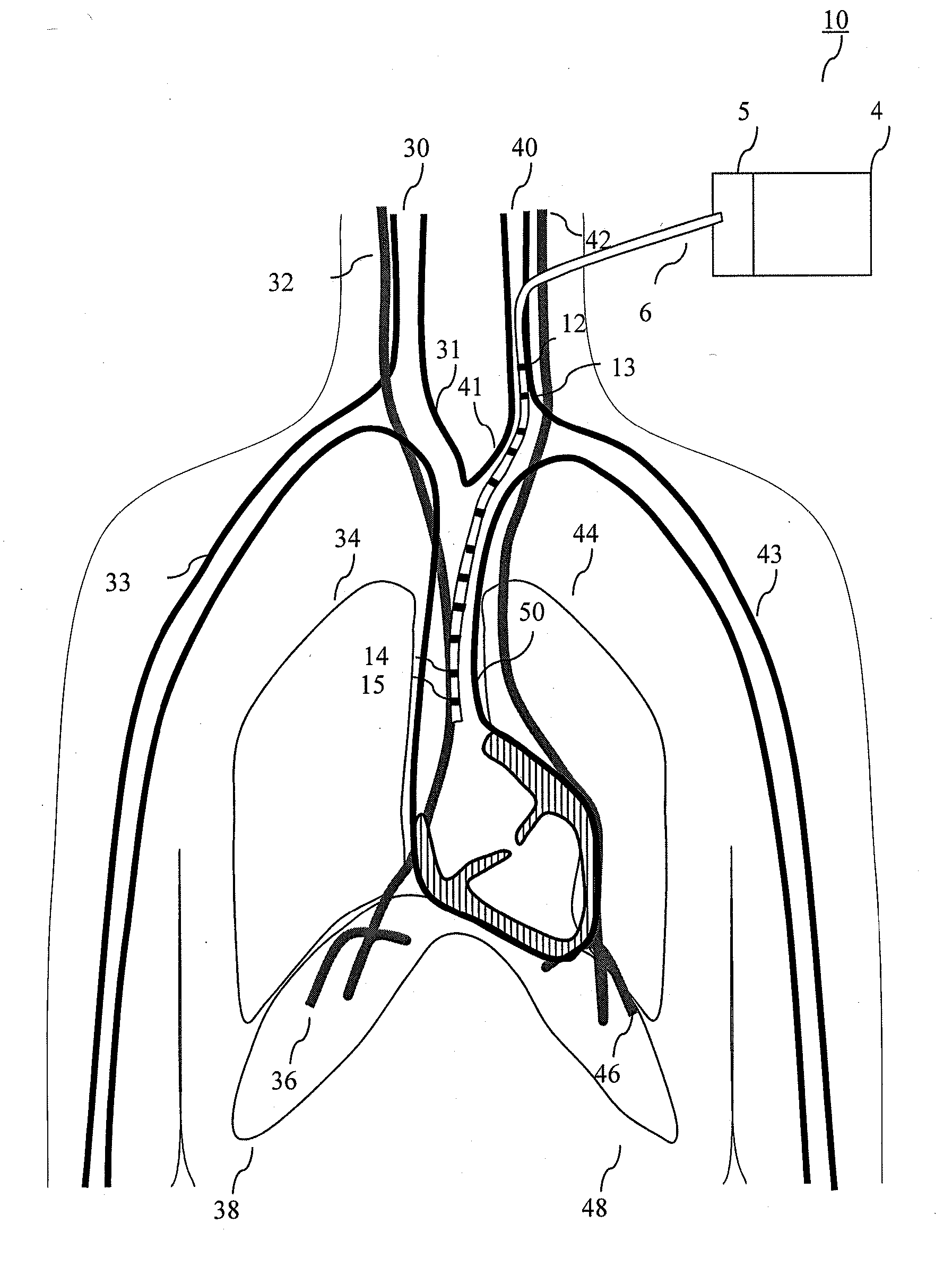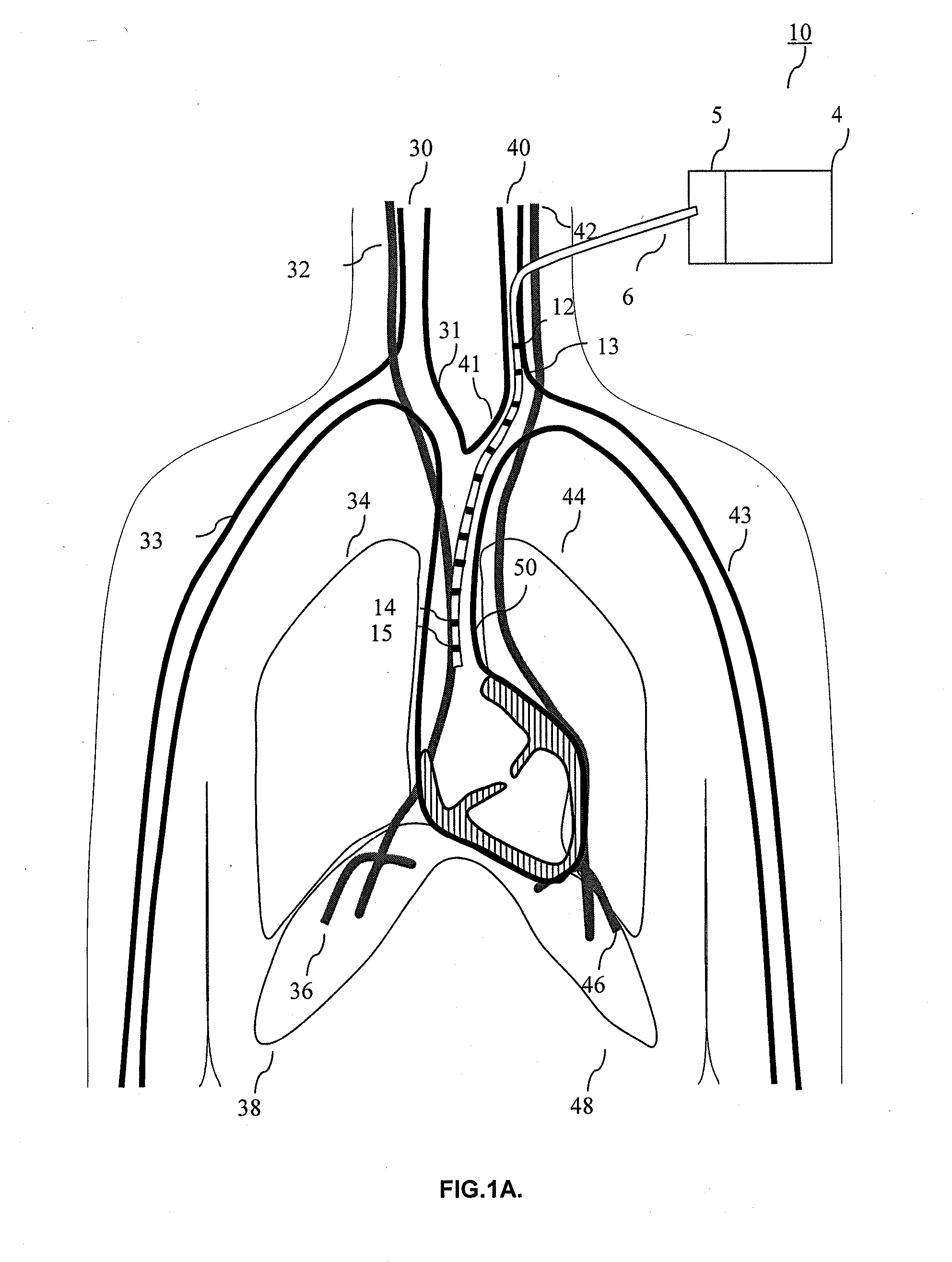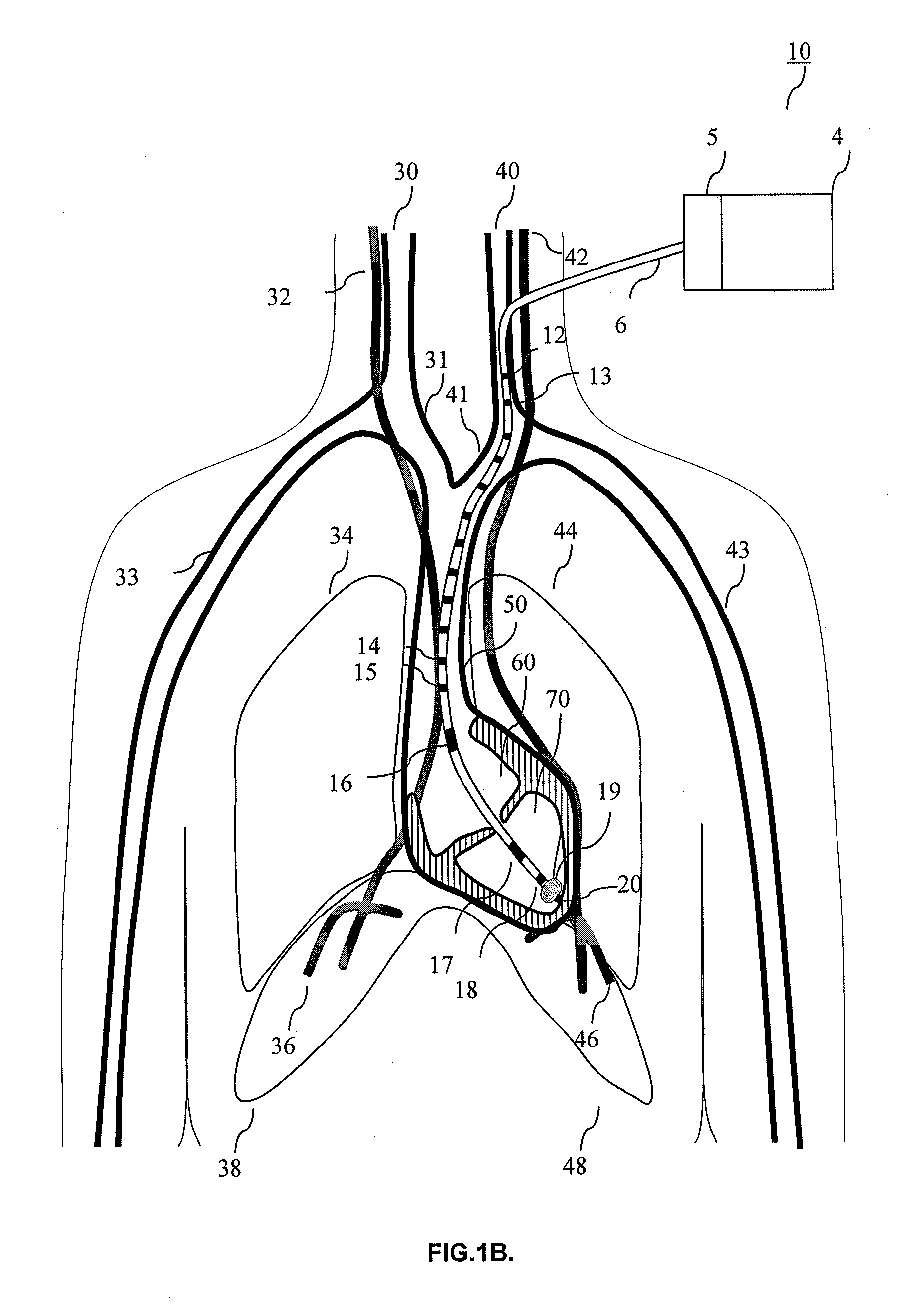Method and device for respiratory and cardiorespiratory support
a technology of respiratory and cardiorespiratory support and support device, which is applied in the direction of angiography, artificial respiration, therapy, etc., can solve the problems of prolonged use of mechanical ventilation, high mortality, and immediate mortality
- Summary
- Abstract
- Description
- Claims
- Application Information
AI Technical Summary
Benefits of technology
Problems solved by technology
Method used
Image
Examples
Embodiment Construction
[0061]In the following description, references are made to illustrative embodiments. It is understood that other embodiments may be utilized without departing from the scope of the disclosure.
[0062]Referring generally to FIGS. 1A and 1B a system in accordance with the invention is shown. FIG. 1A is a schematic view of a system using a respiratory support device (RD) and a respiratory support lead (RL) for delivering phrenic nerve stimulation through a incision made in the left jugular vein 40. Those of skill in the art will appreciate that the system may be modified as shown in FIG. 1B to include cardiac support at the same time as supplying respiratory support. Thus, FIG. 1B is a schematic view of a system using a cardiorespiratory support device (CRD) and a cardiorespiratory support Lead (CRL) for delivering phrenic nerve stimulation through a incision made in the left jugular vein 40. For ease of convenience the inventors will refer to the CRD and CRL in this disclosure although ...
PUM
 Login to View More
Login to View More Abstract
Description
Claims
Application Information
 Login to View More
Login to View More - R&D Engineer
- R&D Manager
- IP Professional
- Industry Leading Data Capabilities
- Powerful AI technology
- Patent DNA Extraction
Browse by: Latest US Patents, China's latest patents, Technical Efficacy Thesaurus, Application Domain, Technology Topic, Popular Technical Reports.
© 2024 PatSnap. All rights reserved.Legal|Privacy policy|Modern Slavery Act Transparency Statement|Sitemap|About US| Contact US: help@patsnap.com










